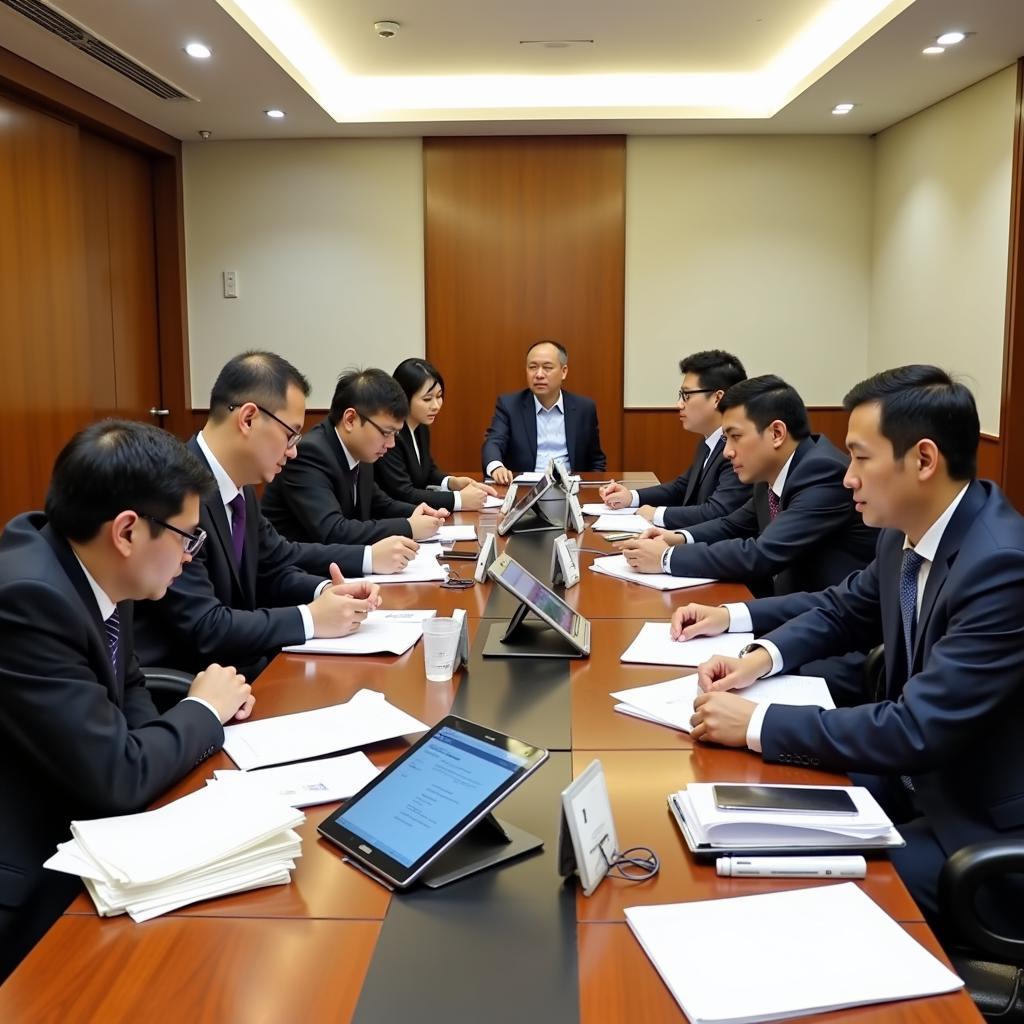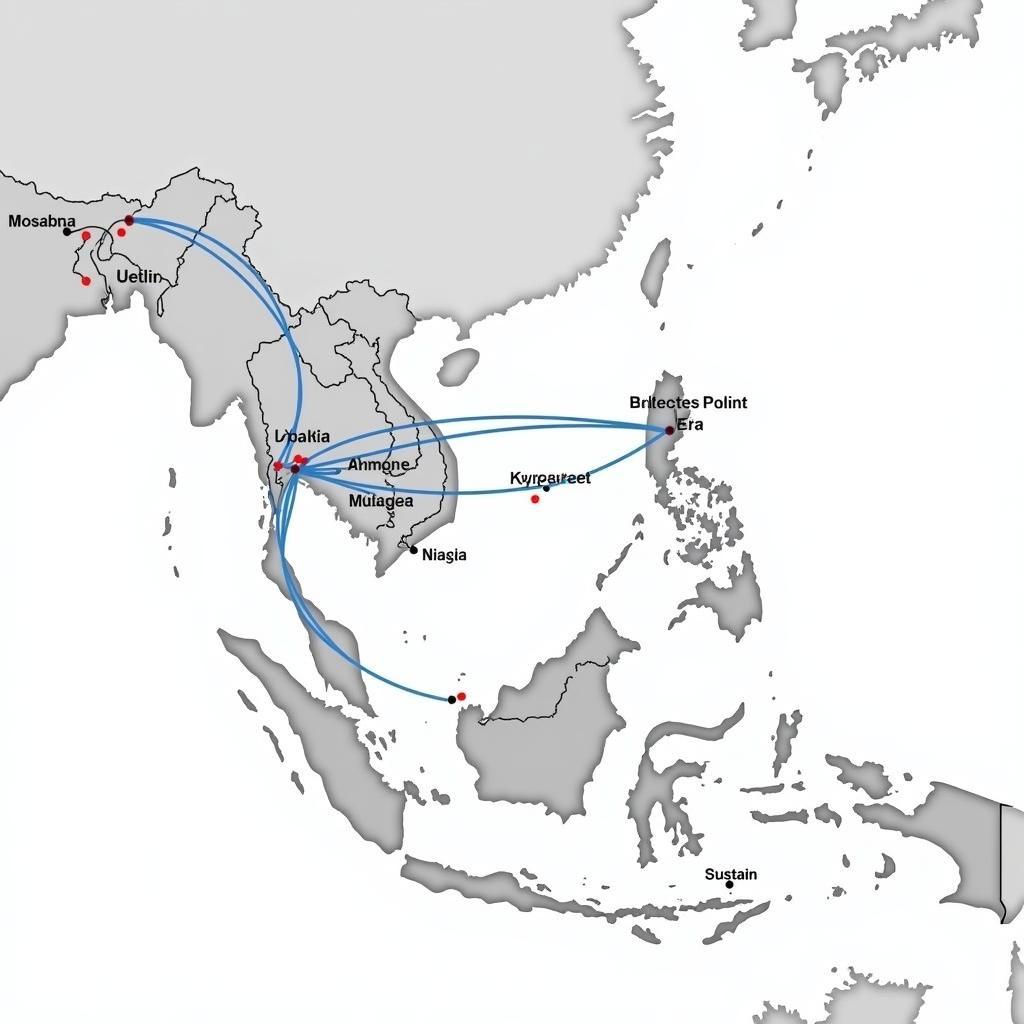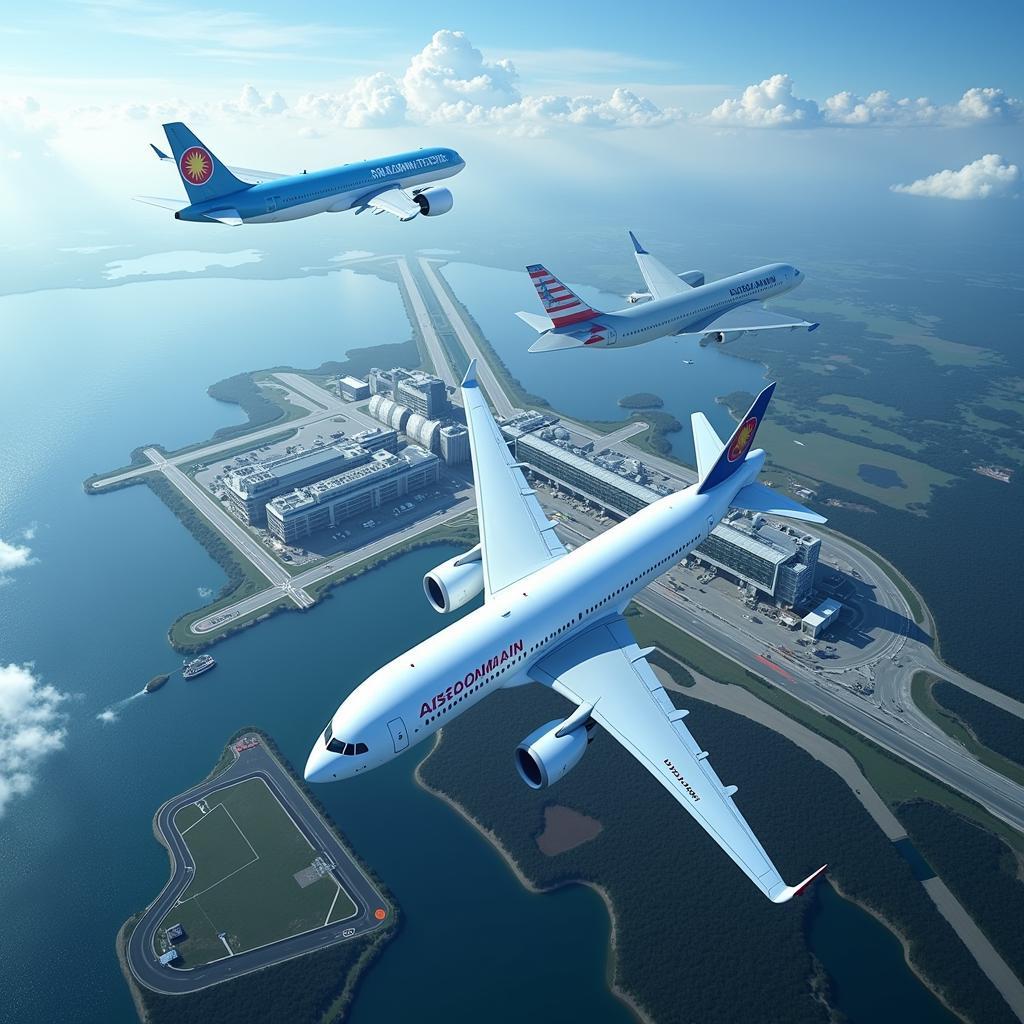The Asean Air Transport Working Group (ATWG) plays a crucial role in fostering cooperation and development within the Southeast Asian aviation sector. This article delves into the importance of the ATWG, its functions, and the impact it has on regional connectivity, economic growth, and the passenger experience. We’ll explore the challenges and opportunities faced by the group and look at its vision for the future of air transport in ASEAN.
 ASEAN Air Transport Working Group Meeting
ASEAN Air Transport Working Group Meeting
Understanding the ASEAN Air Transport Working Group
The ATWG serves as a platform for ASEAN member states to collaborate on air transport policies, regulations, and initiatives. The group works towards harmonizing standards, improving safety and security, and promoting sustainable growth within the aviation industry. They strive to create a seamless and efficient air transport network that facilitates trade, tourism, and people-to-people connectivity across the region. This collaborative effort fosters a dynamic and interconnected ASEAN aviation landscape. One key aspect of their work involves streamlining regulations across borders, making it easier for airlines to operate and for passengers to travel within the region. 12 sektor prioritas di masyarakat ekonomi asean jurnal provides more insights into the prioritized sectors within the ASEAN Economic Community.
Key Functions of the ATWG
The ATWG undertakes several crucial functions to achieve its objectives:
- Developing common standards: The group works towards establishing common safety, security, and operational standards for air transport across ASEAN.
- Facilitating liberalization: The ATWG promotes liberalization of air services within the region, encouraging competition and increasing connectivity.
- Enhancing infrastructure: The group addresses infrastructure development needs, advocating for improvements in airports, air navigation systems, and other related facilities.
- Promoting sustainable growth: The ATWG explores strategies for sustainable aviation practices, focusing on environmental protection and resource efficiency.
 ASEAN Air Transport Connectivity
ASEAN Air Transport Connectivity
The Impact of ATWG Initiatives
The efforts of the ATWG have yielded significant benefits for the ASEAN region:
- Increased connectivity: Improved air transport networks have facilitated greater connectivity between ASEAN member states, boosting tourism and trade.
- Economic growth: The aviation sector’s growth has contributed significantly to the region’s economic development, creating jobs and stimulating investment.
- Enhanced passenger experience: Harmonized regulations and improved infrastructure have resulted in a more seamless and convenient travel experience for passengers.
Challenges and Opportunities for the ASEAN Air Transport Working Group
While the ATWG has made remarkable progress, it continues to face certain challenges:
- Varying levels of development: The diverse levels of economic and infrastructural development among ASEAN member states pose a challenge to achieving uniform standards and implementing regional initiatives.
- Regulatory harmonization: Streamlining regulations across different countries can be complex and time-consuming, requiring close cooperation and coordination.
- Environmental sustainability: Balancing the growth of the aviation sector with environmental protection is a crucial concern, demanding the adoption of sustainable practices.
The Future of ASEAN Air Transport: A Vision for Growth
The ATWG’s vision for the future focuses on creating a safe, efficient, and sustainable air transport system that serves as a catalyst for regional integration and economic prosperity. The group is committed to exploring innovative technologies, enhancing infrastructure, and strengthening cooperation among member states to achieve this goal. ase wmu provides further insights into the workings of the ASEAN-wide mutual recognition arrangements.
 Future of ASEAN Air Transport
Future of ASEAN Air Transport
Conclusion
The ASEAN Air Transport Working Group plays a vital role in shaping the future of Southeast Asian skies. By fostering collaboration and promoting sustainable development, the ATWG contributes significantly to regional connectivity, economic growth, and the overall passenger experience. Addressing the challenges and embracing the opportunities that lie ahead will be essential for realizing the vision of a seamlessly connected and thriving ASEAN aviation sector. ase penang working environment offers a glimpse into working environments in the region.
FAQ
- What is the main purpose of the ASEAN Air Transport Working Group? The ATWG’s primary goal is to promote cooperation and development within the ASEAN aviation sector.
- How does the ATWG contribute to regional connectivity? The group facilitates increased connectivity by harmonizing regulations and improving infrastructure, making it easier for airlines to operate and passengers to travel.
- What are some of the challenges faced by the ATWG? Challenges include varying levels of development among member states, regulatory harmonization complexities, and environmental sustainability concerns.
- What is the ATWG’s vision for the future? The group envisions a safe, efficient, and sustainable air transport system that drives regional integration and economic prosperity.
- How does the ATWG promote sustainable growth in aviation? The ATWG explores strategies for environmentally friendly aviation practices, focusing on resource efficiency and reducing emissions.
- Who are the members of the ATWG? Representatives from the civil aviation authorities of each ASEAN member state.
- How can I learn more about the ATWG’s activities? Information can be found on the ASEAN Secretariat website and through various aviation industry publications.
Scenarios
- Scenario 1: An airline wishes to expand its operations within ASEAN. The ATWG provides guidance on regulatory requirements and helps navigate the process of obtaining necessary approvals.
- Scenario 2: A passenger experiences a flight disruption. The ATWG’s established procedures and passenger rights frameworks help ensure fair compensation and resolution.
- Scenario 3: An airport in an ASEAN member state needs to upgrade its infrastructure. The ATWG assists in identifying funding opportunities and best practices for development.
Further Exploration
Explore more about ASEAN initiatives like ase air brake certification and asea meeting.
Contact us for any inquiries or assistance. Call us at 0369020373, email us at aseanmediadirectory@gmail.com or visit our office at Thôn Ngọc Liễn, Hiệp Hòa, Bắc Giang, Việt Nam. Our customer service team is available 24/7.

